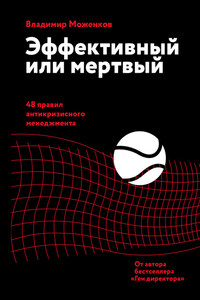Density and sets. Information as a set
The Director of the Institute for research on M-theory (the Theory of everything, as the theory was popularly called), Professor Green of physics, woke up early in the morning. A series of thoughts that had come to him in bed that night, before he had fallen asleep, were accumulating in his mind. The day before, he had received a phone call from his friend, math Professor Philip. Philip shared his ideas, telling him everything that he had told their mutual friend, math Professor Edward. Also, the day before, green himself had an extraordinary dream, which he also told Professor Edward about.
The essence of the dream was as follows:
He had a dream that he was a king, and everyone came to a ball in his Kingdom. During the ball, he saw a beautiful unknown woman. He couldn’t take his eyes off her. He asked her to dance with him, and he was a joy to waltz with her. He had never danced a waltz in his life, or even knew how to dance. And then he did such a thing! Then he asked her to dance again, and the story was repeated. But soon, from the balcony, he saw her coming down the stairs and leaving, and she looked up, and their eyes met again, and she smiled and that was it. She was gone.
Professor Green understood the meaning of this extraordinary dream – the very inspiration came to him, the very real one! It was also surprising that all three friends had dreams with a beautiful woman.
«Gravity is the interaction of masses. Every object that has mass is subject to gravity. Density is the accumulation of mass per unit volume. There are 4 phases of density (density level) of a physical object – its aggregate States – plasma, gas, liquid, solid. An accumulation of mass in a unit of volume is an accumulation of elementary particles in a unit of volume. On the other hand, a set is a collection of information elements based on some attribute. A cluster of elementary particles is a set based on the number of elementary particles. Thus, this set can condense, atomize, go into different phases – that is, into a plasma, a liquid, a gas, a solid, and all this will also be a set. That is, all the same elements of information. Depending on which phase this set is in, the gravity on this set will manifest in different ways. On the third hand, the environment (which can be considered as a level of space, a dimension) in which this set is located is also a set and will affect the first set depending on the phase. Example: Consider a person in 2 environments and phases: – on earth and in water. In the water, its movement will be less rapid, but it will be able to move freely up and down, like a fish (if instead of lungs, there were gills), which cannot be on the ground. It is as if repelling from the medium itself (water) can perform any somersaults (the pushing force is the force of Archimedes). On land, it will not be able to push off the air to do the same somersaults, that is, it cannot fly. Now let’s generalize this conclusion to sets. That is, if two sets are given, where one set is the medium and the other set is the object. The set-object can move freely or not freely depending on the set – environment – water or air. The set-environment can be not only in the types of water or air. For example, a medium can be a vacuum, and a moving object (set) in the medium can be light. If freedom of movement is possible for all sets of objects, depending on the choice of sets of media, then there is such a set – an environment in which our thoughts (if they are considered as a set) float freely, as in water. And it is probably an environment where thoughts float like water – it is a different level of space – that is, another space and dimension that we are not able to detect directly with our instruments and senses. That is, in such a dimension, thoughts would be a solid object, but not so solid that they could not repel on the environment, as a person cannot repel on the air. This means that the ratio of phases and densities between sets of objects and sets of media is important. To achieve when a thought in the air moves like a person in water, that is, its effect on the air and bodies was effective (it is like „SIM – SIM open“ and the door opened), it is necessary that the thought became more dense and so to produce such actions. But since any set can condense and disperse – that is, change its density, and therefore change its gravity-thoughts can change their gravity (now compacting, now dispersing). Crystallization of salt in a saline solution is an example of compaction of a substance. When a substance is compacted, the invisible can crystallize into the visible. There is a change in density, i.e. the mass increases and the gravitational properties of the substance change. If consciousness as an object can be considered as a set at the superquant level, that is, at the level of superstrings, then in order for consciousness to penetrate through thought into all environments, into other dimensions, it must change its density as a set. All this can be mathematically represented in the form of sets of elements that interact – Union, intersection, densification of sets, etc. Any information can be written as sets.»








